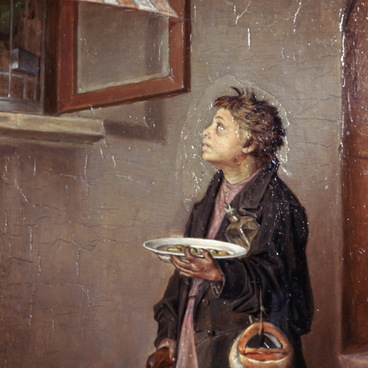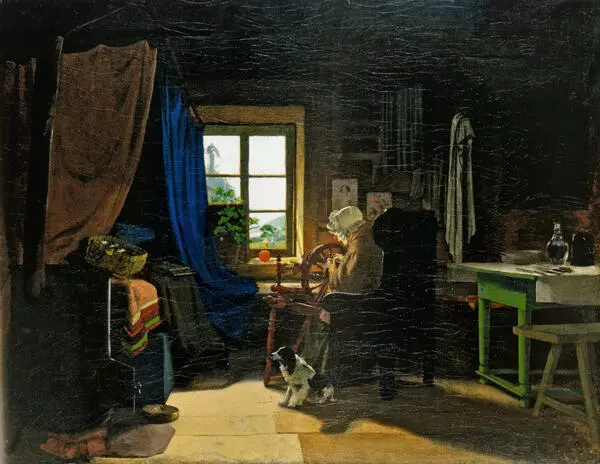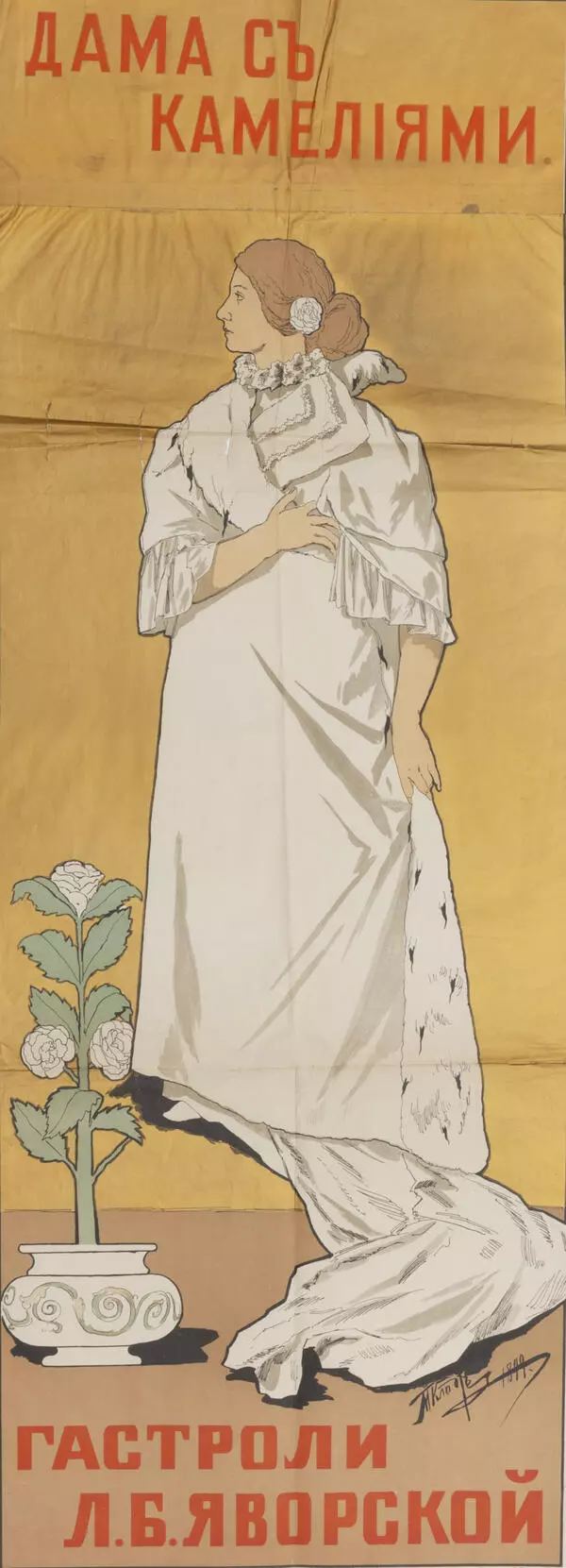Mikhail Clodt painted the picture “Tailor Shop in a Catholic Franciscan Monastery” in Munich. The painting was exhibited at the World Exhibition in Paris and the academic exhibition in Saint Petersburg. In 1918, the work entered the collection of the Ulyanovsk Regional Art Museum from a private collection.
Baron Mikhail Petrovich Clodt was a Russian artist, painter, and watercolorist. His father was the sculptor Pyotr Karlovich Clodt, who created the famous horse figures on the Anichkov Bridge in Saint Petersburg and the high relief in Moscow’s Cathedral of Christ the Savior. Surrounded by art from his early childhood, Mikhail received his initial art education at home, and then the artist Alexander Agin gave him private lessons. After graduating from the Imperial Academy of Arts at the age of 25, Clodt received a Gold medal for his painting “Last Spring” and an allowance to go on an internship to Europe. Mikhail Clodt lived in Paris and Munich, and after returning to Saint Petersburg, he taught at the Baron Stieglitz Central School of Technical Drawing, served as a restorer in the Hermitage and as a draftsman in the imperial archaeological expedition. Mikhail Clodt’s work “Musician” was one of the first in Pavel Tretyakov’s collection.
Clodt chose to depict the Capuchins in modest cassocks, who work busily in the cold monastery tailor shop, as the main characters of his picture. Capuchins were representatives of the monastic order of the Franciscan friars. The artist used intense imagery and managed to create an integral, very poetic and original work. The Franciscans adhered to the principles of asceticism, charity, poverty and complete obedience. Their daily routine consisted of painstaking work, the spiritual component of which was emphasized by the artist. In his painting, Clodt showed religious symbols that did not gain immediate attention: the crucifix, the image of the Virgin Mary, and the view of the temple in the window. These symbols remind of the friars’ main task — serving God. Clodt depicted people going about their simple earthly business, but he endowed their images with special spirituality and calmness. The monks are engaged in a leisurely conversation and habitual chores. They enjoy looking at the landscape outside the window and feeding birds. The combination of the high spirituality of the monastic order and the earthly labor in a tailor workshop creates a special atmosphere of spiritual harmony.
Baron Mikhail Petrovich Clodt was a Russian artist, painter, and watercolorist. His father was the sculptor Pyotr Karlovich Clodt, who created the famous horse figures on the Anichkov Bridge in Saint Petersburg and the high relief in Moscow’s Cathedral of Christ the Savior. Surrounded by art from his early childhood, Mikhail received his initial art education at home, and then the artist Alexander Agin gave him private lessons. After graduating from the Imperial Academy of Arts at the age of 25, Clodt received a Gold medal for his painting “Last Spring” and an allowance to go on an internship to Europe. Mikhail Clodt lived in Paris and Munich, and after returning to Saint Petersburg, he taught at the Baron Stieglitz Central School of Technical Drawing, served as a restorer in the Hermitage and as a draftsman in the imperial archaeological expedition. Mikhail Clodt’s work “Musician” was one of the first in Pavel Tretyakov’s collection.
Clodt chose to depict the Capuchins in modest cassocks, who work busily in the cold monastery tailor shop, as the main characters of his picture. Capuchins were representatives of the monastic order of the Franciscan friars. The artist used intense imagery and managed to create an integral, very poetic and original work. The Franciscans adhered to the principles of asceticism, charity, poverty and complete obedience. Their daily routine consisted of painstaking work, the spiritual component of which was emphasized by the artist. In his painting, Clodt showed religious symbols that did not gain immediate attention: the crucifix, the image of the Virgin Mary, and the view of the temple in the window. These symbols remind of the friars’ main task — serving God. Clodt depicted people going about their simple earthly business, but he endowed their images with special spirituality and calmness. The monks are engaged in a leisurely conversation and habitual chores. They enjoy looking at the landscape outside the window and feeding birds. The combination of the high spirituality of the monastic order and the earthly labor in a tailor workshop creates a special atmosphere of spiritual harmony.






